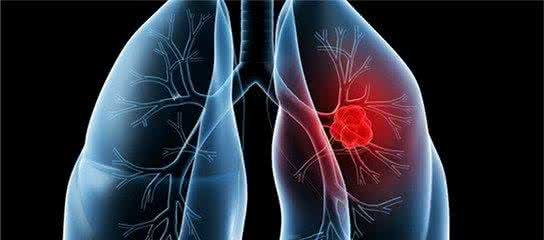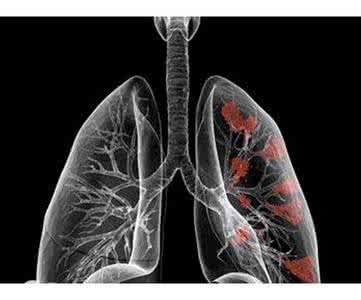Should advanced symptom of lung cancer infect notice?
summary
Lung cancer is one of the most malignant tumors that incidence rate and mortality rate increase fastest and is the most dangerous to the health and life of the population. Incidence rate and incidence rate of lung cancer have been significantly increased in recent 50 years. Lung cancer incidence and mortality rate is the first place in all cancers, and the incidence rate of female is second, and the mortality rate is second. The etiology of lung cancer is still not completely clear, a large number of data show that long-term heavy smoking is closely related to the occurrence of lung cancer. Previous studies have shown that: the probability of lung cancer in long-term smokers is 10-20 times that of non-smokers. The younger the age of starting smoking, the higher the risk of lung cancer. In addition, smoking not only directly affects their own health, but also has adverse effects on the health of the surrounding population, leading to a significant increase in the incidence of lung cancer among passive smokers. The incidence rate of lung cancer in city residents is higher than that in rural areas, which may be related to city air pollution and carcinogens in smoke. Therefore, we should promote non-smoking and strengthen the urban environmental health work. Now let's talk about the late symptoms of lung cancer infection should pay attention to?
Should advanced symptom of lung cancer infect notice?
1. Cough is the most common symptom, with cough as the first symptom accounting for 35% - 75%. Cough caused by lung cancer may be related to changes in bronchial mucus secretion, obstructive pneumonia, pleural invasion, atelectasis and other chest complications. When the tumor grows in the bronchial mucosa above the large diameter and sensitive to external stimulation, it can produce cough similar to that caused by foreign body like stimulation. The typical manifestation is paroxysmal irritative dry cough, which is often difficult to control by general antitussive drugs. When the tumor grew in the small bronchial mucosa below the segment, the cough was not obvious, or even no cough. For patients with smoking or chronic bronchitis, such as the degree of cough aggravating, frequency conversion, cough nature changing, such as high pitched metal tone, especially in the elderly, we should pay close attention to the possibility of lung cancer.

2. Sputum with blood or hemoptysis is also a common symptom of lung cancer, which is the first symptom of about 30%. Due to the rich blood supply and brittle texture of tumor tissue, blood vessels rupture during severe cough, which may also be caused by local necrosis of tumor or vasculitis. Hemoptysis of lung cancer is characterized by intermittent or persistent, repeated small amount of blood in sputum, or a small amount of hemoptysis. Occasionally, it is difficult to control massive hemoptysis due to rupture of large blood vessels, formation of large cavities or tumor breaking into bronchi and pulmonary vessels.

3. About 10% of the patients take this as the first symptom, which is more common in central lung cancer, especially in patients with poor lung function. The main causes of dyspnea include: (1) in the late stage of lung cancer, mediastinal lymph nodes metastasize widely, and the symptoms of shortness of breath or even asphyxia may appear when the trachea, carina or main bronchus are compressed. ② When a large amount of pleural effusion oppresses the lung tissue and displaces the mediastinum seriously, or when there is pericardial effusion, chest tightness, shortness of breath and dyspnea may also occur, but the symptoms can be relieved after fluid extraction. ③ Diffuse bronchioloalveolar carcinoma (dlbc) and bronchial disseminated adenocarcinoma (BCG) lead to decreased respiratory area, dysfunction of gas diffusion, serious imbalance of ventilation / blood flow ratio, aggravation of dyspnea and cyanosis. ④ Others: including obstructive pneumonia. Atelectasis, lymphangioinflammatory lung cancer, tumor microembolism, upper airway obstruction, spontaneous pneumothorax and COPD.

matters needing attention
Lung cancer can be prevented and controlled. Protect the environment and the environment in the west, the incidence rate and mortality rate of lung cancer has decreased significantly in recent years. The prevention of lung cancer can be divided into three levels; Secondary prevention is the screening and early diagnosis of lung cancer; The third level prevention is rehabilitation prevention. Primary prevention: 1.. Prohibition and control of smoking has been proved by overseas studies. Smoking cessation can significantly reduce the incidence of lung cancer, and the earlier the time of smoking cessation, the more obvious the incidence rate of lung cancer decreases. Therefore, smoking cessation is the most effective way to prevent lung cancer. 2. protect the environment protect the environment has already proved that air pollution, sedimentation index, smoke index, benzopyrene and other exposure dose and lung cancer incidence rate is positively correlated, protecting the environment and reducing air pollution is an important measure to reduce the incidence of lung cancer. 3. occupation occupation prevention occupation cancer causing many lung cancer incidence rate has been recognized, reduce occupational exposure to carcinogens can reduce the incidence rate of lung cancer. 4. Scientific diet can prevent lung cancer by increasing vegetables and fruits in diet.














